Linen fabric, also known as flax fabric, is one of the world's oldest and most beloved natural fabrics. With its exquisite beauty, high durability, and comfortable feel when worn, linen has become a symbol of a luxurious and sustainable lifestyle. Let's explore in more detail what linen fabric is and its outstanding characteristics with Thai Tuan LMS.
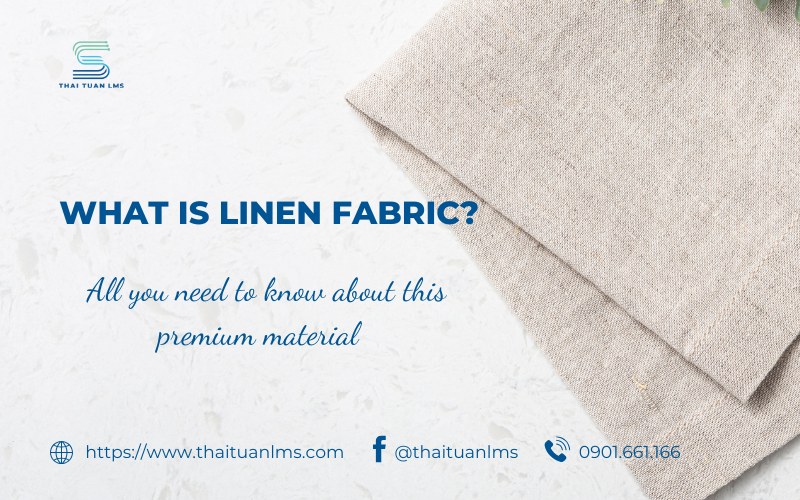
Linen fabric: The perfect choice for sustainable fashion
Learn about what linen fabric is.
Linen fabric is a type of fabric woven from the fibers of the flax plant. Flax is a plant native to Europe and is now grown worldwide, especially in temperate climate regions.
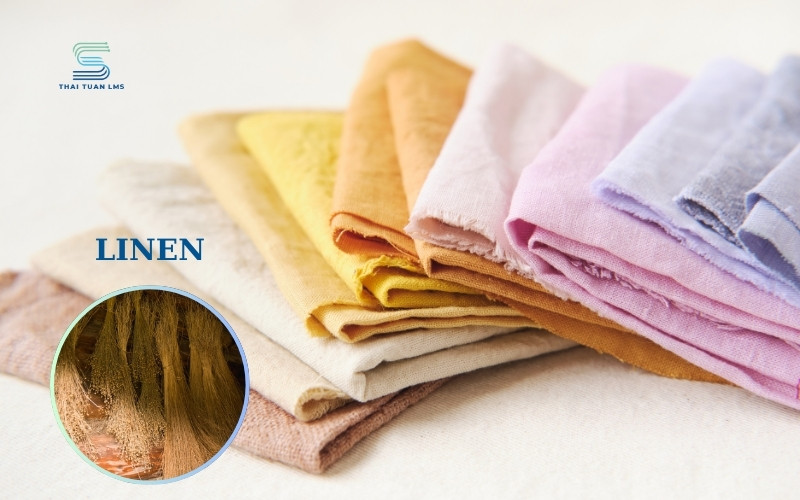
The production process of linen is quite manual and requires many steps, which is why linen fabric often costs more than other types of fabrics.
What are the advantages and disadvantages of linen fabric?
In today’s sustainable fashion industry, linen fabric is increasingly favored for the outstanding advantages it brings.

Advantages of linen material
- Good moisture-wicking ability: This is a major plus for line fabric, which absorbs sweat extremely well and does not cause heat or discomfort when worn, especially during hot summer days.
- Cool and breathable: The structural characteristics of linen fibers create many gaps that allow air to circulate easily, providing a cool and comfortable wearing experience.
- Good heat resistance, durable over time: Even when exposed to sunlight for extended periods or in high temperatures, linen products are unlikely to suffer damage. Linen material has high durability, becoming softer and shinier with each wash.
- Environmentally friendly: Linen is a natural, biodegradable material that does not harm the environment. Therefore, linen is becoming a trend in sustainable fashion.
- Style: Linen products offer a natural, luxurious, and trendy appearance.
Disadvantages of linen fabric
Besides the outstanding advantages that linen fabric offers, this national fabric also has a few limitations, such as:
- Easily wrinkled: Linen wrinkles very easily, even after washing and drying. Therefore, users will spend time ironing before each wear.
- Little stretch, poor elasticity: Due to the thickness of the fibers, linen fabric does not ensure good elasticity, which can be inconvenient for the wearer.
- Low friction resistance: Linen has a characteristic of thick fiber structure and is made entirely from natural materials, making it difficult to avoid the downside of low friction resistance.
- Relatively high price: Due to the complex and manual production process, linen fabric often costs more than other types of fabrics.
Some types of linen materials are popular today
Here are some popular types of linen fabrics today:
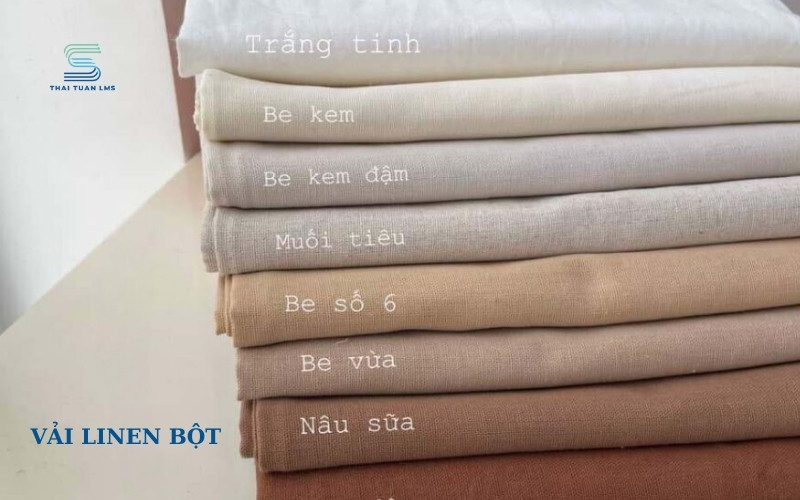
- Characteristics: Soft, lightweight, has a natural drape, good moisture absorption, and creates a cool feeling. However, linen powder is prone to wrinkling during washing and can fade in color over time.
- Applications: Commonly used to make summer clothing such as shirts, dresses, and shorts.
Linen "Tung"
Linen Tung is considered the "darling" of designers with:
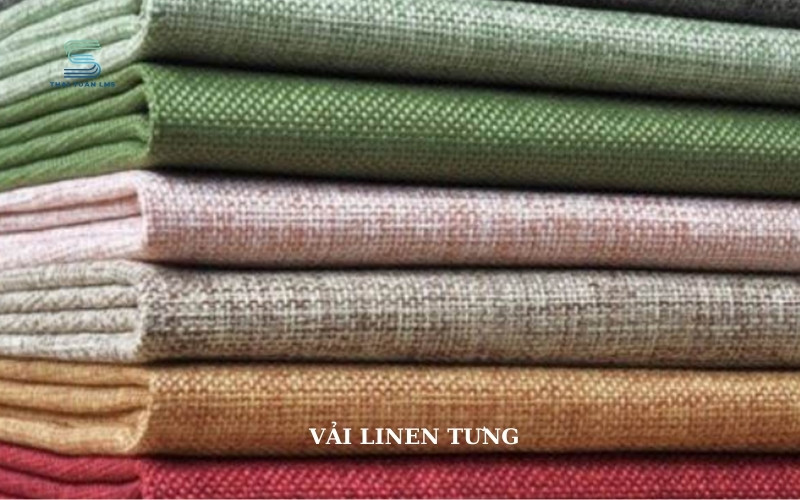
- Characteristics: The fabric has a slight sheen, is soft and smooth, colorfast, less wrinkled, highly durable, and effectively resists shrinking and sagging.
- Applications: Suitable for making high-end products such as shirts, dresses, and tailored pants.
Linen Striped
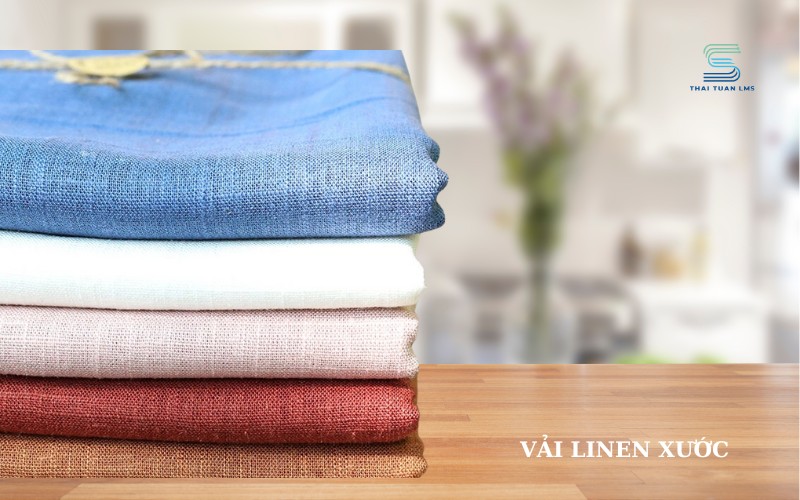
- Characteristics: The fabric surface features horizontal or vertical stripes, creating a natural and airy look.
- Applications: Typically used for summer clothing and loungewear.
Linen Silk
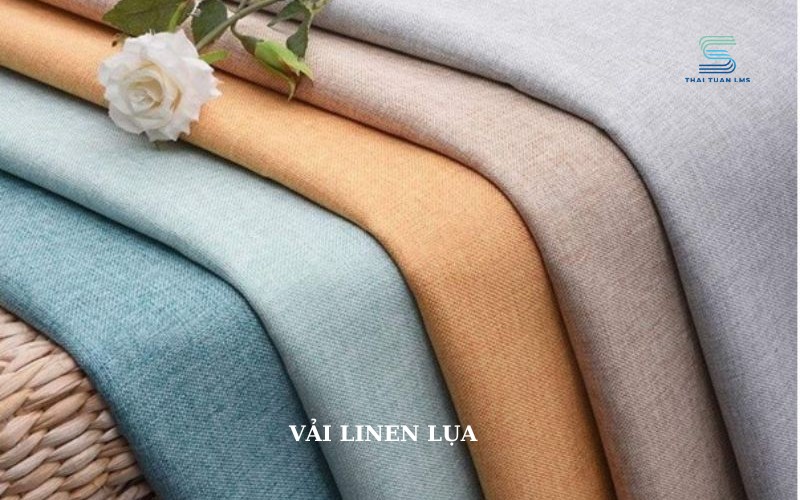
- Characteristics: A blend of linen and silk fibers, resulting in a soft, silky, and luxurious material.
- Applications: Often used for high-end products such as traditional dresses, evening gowns, and shawls.
Linen Cotton
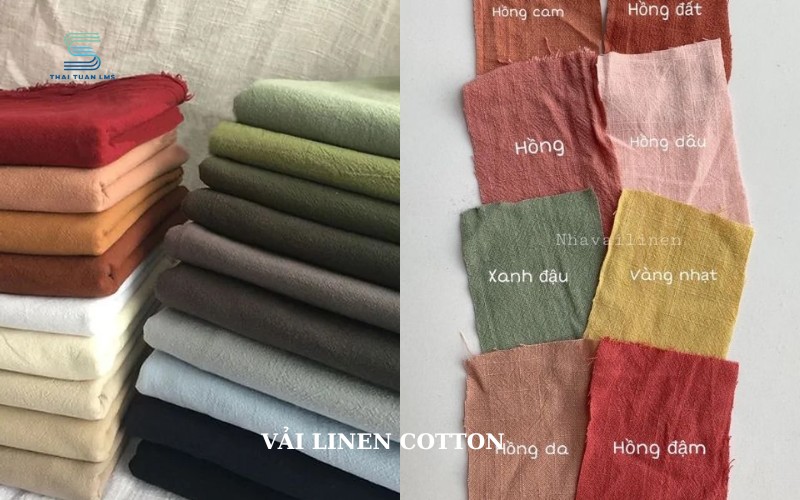
- Characteristics: A mix of linen and cotton fibers, creating a soft, moisture-absorbent, and colorfast fabric.
- Applications: Suitable for a variety of products such as shirts, dresses, and children’s clothing.
In addition to these popular linen materials, there are still other types of linen, such as:
- Japanese Linen: Known for its high quality and diverse colors.
- Korean Linen: Modern designs that align with fashion trends.
Depending on the intended use, season, color preferences, and price, you can choose the right linen fabric for your outfit.
How to use and store linen fabric to maintain its beauty and durability
Line fabric is a natural, durable material that offers comfort. To keep linen garments looking beautiful and lasting long, it’s essential to know the proper usage and care techniques.
Washing Linen Fabric
- Hand washing is best: It’s recommended to wash by hand in cold or lukewarm water (not exceeding 30°C) using a mild detergent.
- Machine washing: If using a washing machine, select a gentle cycle, use a laundry bag, and turn garments inside out to protect the fibers.
- Avoid wringing too hard: Excessive wringing can damage the fibers and cause wrinkles.
- Do not use hot water: Hot water can shrink the fabric and cause colors to fade.
- Avoid strong detergents: Strong detergents can damage linen fibers.
Drying Linen Fabric
- Dry in a well-ventilated area: avoid direct sunlight as it can fade colors and damage the fibers.
- Hang straight: Use a hanger to hang linen clothes to prevent wrinkles.
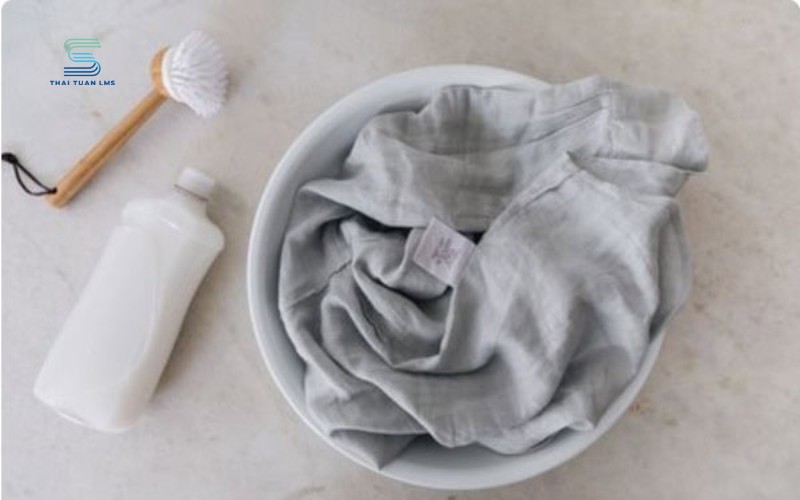
Ironing Linen Fabric
- Iron while slightly damp: Ironing while the fabric is still damp helps reduce wrinkles and makes ironing easier.
- Use low heat: Iron at a low temperature (around 150-180°C) to avoid burning the fabric.
- Iron on the reverse side: Ironing the reverse side protects the color and surface of the fabric.
- Use steam: Using steam when ironing will soften the fabric and reduce wrinkles.
Storing Linen Fabric
- Hang garments: After washing and ironing, hang linen clothes on a hanger to maintain shape and avoid wrinkles.
- Avoid folding clothes: Folding can create difficulty in removing wrinkles.
- Store in a dry place: Keep linen garments in a dry environment to prevent mildew.
Additional Tips:
- Separate light and dark-colored linen garments during laundry.
- Do not soak linen clothes in water for too long.
- Avoid washing linen with other types of fabrics.
The above information provides a comprehensive overview of linen fabric. We hope you find this information helpful.

 Vietnamese
Vietnamese  English
English 










